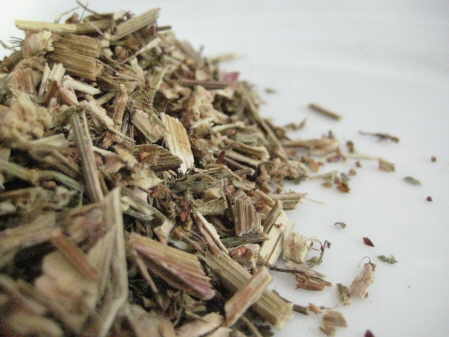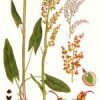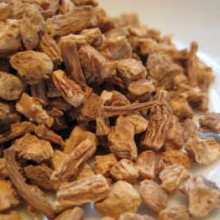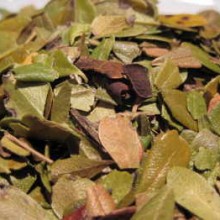Sheep’s Sorrel (Rumex acetosella) not to be confused with Garden Sorrel which is Rumex acetosa, is a perennial weed but hard to find and correspondingly expensive, particularly at certain times of the year when it cannot be harvested – you will find it difficult to obtain. Also known as Sheep’s, Field or Red Sorrel, and Sour Weed
The plant has green arrowhead-shaped leaves and red-tinted deeply ridged stems, and it sprouts from an aggressive rhizome. The flowers emerge from a tall, upright stem. Female flowers are maroon in colour.
In the Caribbean, The name typically refers to Jamaican Red Sorrel (Hibiscus sabdariffa). A popular plant, the beverage from which is widely consumed and is dark red, with a sweet, spiced flavour. The deep red coloured annual is also used in making tarts and jellies. The fibre is also used by craftspeople. This is a different species and should not be confused
Traditional Uses & Constituents for Sheep’s Sorrel:-
In culinary terms there are several uses of the herb including a garnish, a tart flavouring agent and a curdling agent for cheese. The leaves have a lemony, tangy or nicely tart flavour. You can put the leaves in a salad.
Medicinally, The herb contains constituents including beta carotene, tartaric acid, oxalates (oxalic acid), anthraquinones (Chrysophanol, Emodin, Rhein), glycosides like hyperoside, the quercitin-3d-galactoside.
It has a number of purported uses and folk remedies that include treatment for inflammation, cancer, diarrhoea, scurvy and fever. A tea made from the stem and leaves can be made to act as a diuretic. It also has certain astringent properties and uses. Other historical uses include that of a vermifuge, as the plant allegedly contains compounds toxic to intestinal parasites (worms).
Its alleged use as a cancer treatment, generally considered a folk remedy, is as a primary ingredient in a preparation commonly referred to by the name Essiac.
The herb has been cultivated for centuries, although its popularity has decreased considerably over time and although it grows wild and is considered a common weed, it is rare and hard to find in herbal outlets or as a culinary herb. The edible leaves have a flavour that is very similar to that of kiwifruit (Chinese Gooseberry), or sour wild strawberries. Because of the mildly acidic taste, some say that it quenches thirst, and consider it helpful in boosting the appetite. The leaves may be added to salads to sharpen the taste. They are often puréed in soups and sauces and is the characteristic ingredient in shav. The plant contains oxalic acid, which contributes to its characteristic flavour, and so may be contraindicated in people with rheumatic-type complaints, kidney or bladder stones, and the like. It is also a laxative






